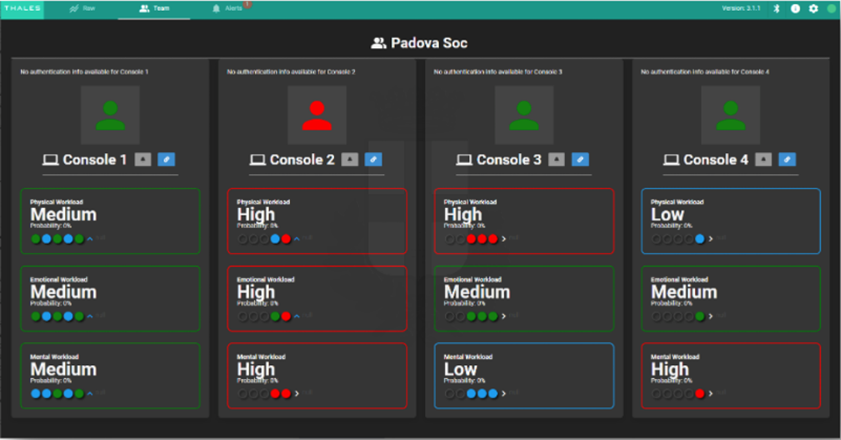| |
Measures mental workload and stress of emergency operators using a brain-computer interface, raises alerts if anomalies arise |
|
WHAT PROBLEM DOES THE TOOL HELP SOLVE? |
|
A SOC (Security Operations Centre) can be a highly stressful working environment, and staff may react slowly or even make mistakes if stress goes unnoticed. The opposite situation – too little to do – can lead to boredom and inattentiveness. This tool minimizes potential human error and improves human–machine teaming performance by monitoring the physical, emotional and mental workload status of operators while they perform their duties. It provides an early notification of an individual and/or a team’s workload capability and ability to cope with stressors during emergencies. Without the tool: · Workload perception is implicit, subjective and sporadic With the tool: · Workload assessment is explicit, objective and continuous |
|
HOW IS IT DEPLOYED IN IMPETUS? |
|
· Who are the users: SOC operators and supervisors, IT specialists, behavioural scientists, stress analysts. · What are the critical situations for deployment: The tool and its sensors are unobtrusive and can be deployed continuously while operators are working, including during emergencies. |


|
HOW DOES IT WORK? |
|
Each operator wears an unobtrusive wearable headband which detects bio-signals (pulse, brain waves) and transmits these to the tool. Operator workload is predicted based on personalized, pre-trained (machine learnt) models. The tool can be used at individual and team levels. The supervisor is alerted when an anomaly is detected. The graphical user-interface provides the supervisor with an overview of: · Workload status of each team member, including trends over-time · Alerts related to: o sensor data availability (e.g. in case of sensor failure) o workload (too high/too low) for any of the operators |

